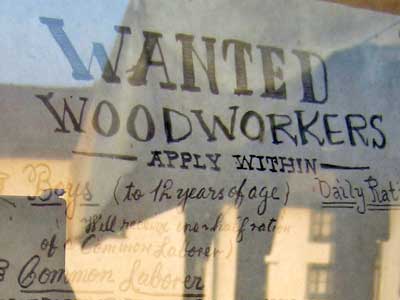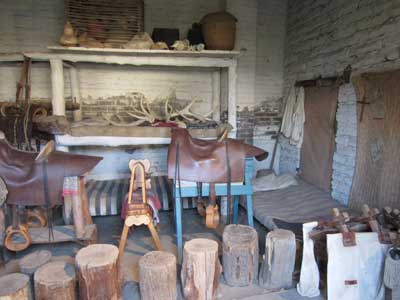SACRAMENTO (Day 9 - part 2)
We continued exploring the numerous rooms of the fort.


The kitchen


In the old distillery room was a wealth of information about Sutter, his fort and the area's history.


Johann August Sutter was born in Germany in 1803 but was considered a citizen of only one Swiss village, where his father had been born. In any other village, he was not allowed to hold a well-paying job or trade. He had to make a living as a store clerk. He was married in 1826 and the following day his first son was born. Unable to get out of debt (partially because he was an extravagant spender) and facing jail, he left... not only Switzerland, but also his wife and his 5 children.
Arriving in New York, he changed his name to John and made his way west on a wagon train. In 1838, he joined a group of missionaries and traveled the Oregon Trail to Fort Vancouver. He sailed to Honolulu (in the Kingdom of Hawai‘i) and after several months, sailed to Alaska. In 1839, he arrived at Yerba Buena (now San Francisco, which at that time was only a small seaport town) in California (called Alta California then, since it was a province of Mexico).
In order to buy land, he had to become a Mexican citizen, which he did. Sutter's fort was formidable, with thick high walls topped with cannons. He also trained of own private army of Native Americans. His place became a safe haven for immigrants in a hostile wilderness, especially for those arriving over the high passes of the Sierra Nevadas. He became prosperous and built a flour mill and a saw mill.
He was not necessarily kind to his Native American workers, who were often subjected to varying degrees of violence and force. As many as 800 were kept in a state of slavery. There are accounts that Sutter raped girls as young as 12 years old.
Sutter intended to build a city on his property (which would one day be Sacramento) so he required lumber. During the construction of his saw mill, gold was discovered. Sutter tried to keep this quiet and buy up as much land as he could. But, as always, word got out and the California Gold Rush began.
Sutter tried to turn a profit and rent out space in the fort for stores, boarding houses, saloons and a hotel. But quickly things went downhill. Huge crowds overran his land and destroyed everything he owned. After all, it was far easier for miners (the "forty-niners") and squatters to steal rather than buy things such as horses, cattle and equipment. Workmen deserted and gold-seekers trampled his fields.
In order to save what little he had left, he gave everything to his youngest son, whom he'd brought over from Switzerland. Eventually the rest of his family joined him. Sutter had to retreat to his farm further north, and in 1849, his fort was put up for sale for $7,000.
When the farm was burned down in 1865 by a disgruntled transient, Sutter and his wife moved to Washington D.C. There he petitioned Congress to be compensated for his lost land, stolen livestock, burned home, and previous legal fees. Unfortunately he was constantly rejected.


The 1848 waterfront of Sacramento ... Some of the "happy" powerful men of the times

The old distillery


Millstones

Heading up into one of the bastions (or defensive corner of the fort)


Cannons


Carpenter's shop


Vaquero (or Mexican cowboy) room ... and some quarters


Gunsmith's shop




Blacksmith's shop


Candle shop


Bedroom




The trade store




A glimpse bac outside


The guard room




The south gate


return • continue

